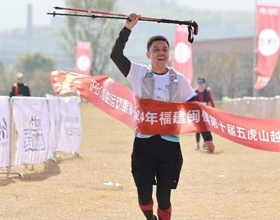Shipping artificial plants1 internationally comes with a major challenge—damage during transit. Fragile leaves, delicate branches, and lightweight materials make these products vulnerable to crushing, bending, or breakage. Poor packaging not only leads to financial losses but also affects business reputation and customer satisfaction.
Proper packaging techniques, durable materials, and strategic packing methods are crucial for preventing damage. By optimizing packaging, B2B exporters can minimize risks, reduce replacement costs, and enhance delivery efficiency.
Let’s explore the best practices for packaging artificial plants to ensure they arrive in perfect condition.
Why Proper Packaging Matters for Artificial Plant Exports
Artificial plants often feature flexible stems, realistic silk or PU leaves, and fragile structural components. Without adequate protection, common shipping damages include:
- Leaf Crushing: Flattened or creased leaves due to excessive pressure.
- Stem Breakage: Weak stems snapping from improper support.
- Pot Damage: Ceramic, resin, or plastic pots cracking during transit.
- Color Fading: Exposure to moisture or UV rays causing discoloration.
To avoid these issues, exporters must adopt protective packaging solutions2 tailored to different plant types and shipping methods.
Essential Packaging Materials for Artificial Plants
Choosing the right materials is the first step in securing artificial plants for transport.
1. Protective Wrapping
- Bubble Wrap: Provides cushioning for delicate parts.
- Foam Sheets: Prevents scratches and absorbs shocks.
- Tissue Paper or Soft Fabric Wrap: Protects silk flowers and leaves from abrasion.
For more details on selecting materials, see this guide on protective packaging2.
2. Structural Support
- Corrugated Cardboard Inserts: Reinforces boxes to prevent crushing.
- Plastic or Metal Frames: Supports large artificial trees or heavy planters.
- Foam Blocks or Air Pillows: Fills empty spaces to avoid movement.
Learn how to choose structural support materials3 for optimal protection.
3. Moisture & UV Protection
- Sealed Plastic Bags: Shields plants from humidity during transit. See moisture damage protection tips4.
- UV-Resistant Coatings: Protects colors from fading in long-haul shipments. Check UV protection strategies5.
4. High-Quality Cartons & Pallets
- Double-Walled Corrugated Boxes: Stronger and more impact-resistant than standard cardboard.
- Wooden Crates or Reinforced Pallets: Ideal for bulk shipments and large artificial trees.
Explore the benefits of using pallets vs. loose cartons6 for enhanced protection.
Best Packaging Techniques for Different Artificial Plant Types
Different artificial plant categories require specialized packaging methods.
1. Small & Medium Potted Plants
Problem: Potted plants shift inside boxes, leading to broken pots and bent leaves.
Agitation: Loose packing increases the risk of damage during handling.
Solution: Use molded inserts and secure pot bases with cushioning materials.
Packing Steps:
- Wrap pots in bubble wrap and secure them with tape.
- Use foam inserts to keep pots in place.
- Fill gaps with air pillows or paper fillers to prevent movement.
- Use "Fragile" labels to indicate careful handling.
For more tips, refer to this guide on shipping potted plants7, adaptable for artificial plants.
2. Large Artificial Trees & Green Walls
Problem: Large artificial trees and panels are prone to bending and snapping.
Agitation: Oversized shipments require extra care to prevent structural damage.
Solution: Modular packaging and metal support frames ensure safe transport.
Packing Steps:
- Disassemble tree sections (if possible) to reduce size.
- Secure branches with soft foam or protective netting.
- Use metal or wooden frames to support the trunk.
- Pack in reinforced wooden crates for maximum stability.
Check how to ship oversized items8 for additional guidance.
3. Artificial Vines & Hanging Plants
Problem: Long vines tangle easily, causing a messy presentation upon arrival.
Agitation: Unraveling tangled vines adds labor costs and delays.
Solution: Bundle vines neatly with soft ties and place them in structured compartments.
Packing Steps:
- Gently coil vines and secure them with twist ties.
- Place in long, shallow boxes with dividers.
- Use tissue paper to separate layers and prevent tangling.
See this guide on packing unusually shaped products9 for relevant techniques.
Cost-Effective Packaging Strategies for B2B Exporters
1. Optimize Box Sizes for Efficient CBM Utilization
Why? Shipping costs are often calculated by volume (Cubic Meter - CBM). Oversized packaging leads to wasted space and higher costs.
Solution:
- Use custom-sized boxes to fit products snugly.
- Stack items efficiently to reduce empty gaps.
- Consider vacuum-sealed packaging for compressible plants.
Learn more about optimizing box sizes3 to cut costs.
2. Use Stackable Packaging for Bulk Shipments
Stackable packaging10 maximizes container space while keeping shipments stable.
| Packaging Type | Space Efficiency | Best for |
|---|---|---|
| Nestable Pots | High | Potted plants, small trees |
| Stackable Cartons | Medium | Mixed artificial plant shipments |
| Wooden Crates | Low (but high protection) | Large trees, custom orders |
3. Implement Drop-Testing for Durability Assurance
Simulating real shipping conditions ensures packaging can withstand impacts. See this drop-testing guide11 for detailed steps.
How?
- Drop Test: Drop packages from a 1-meter height to check impact resistance.
- Vibration Test: Mimics truck or ship movement.
- Compression Test: Ensures boxes can withstand stacking pressure.
4. Labeling & Handling Instructions
Many damages occur due to improper handling. Clear labels help prevent mishandling. Refer to how to properly label shipments12.
- "This Side Up" Labels ensure correct positioning.
- "Handle with Care" Stickers remind logistics teams to avoid rough handling.
- Fragile Markings indicate delicate items inside.
Common Myths About Artificial Plant Packaging
"More packaging means better protection."
Not necessarily! Excessive packaging increases costs and waste. Smart, space-efficient packing methods work better.
"Plastic wrap alone is enough for moisture protection."
For long transit times, additional moisture-absorbing packets help prevent humidity damage alongside plastic wrap strategies4.
"Standard cardboard boxes can handle all shipments."
Heavy or large artificial plants require reinforced cartons or wooden crates to prevent damage.
Conclusion
Effective packaging is essential for preventing damage during international artificial plant shipping. By using high-quality materials, optimizing space, and implementing smart handling practices, B2B exporters can ensure their products arrive in perfect condition. Strategic packaging isn’t just about protection—it’s about saving costs and maintaining customer trust.
-
Explanation: FedEx guide on packing breakables, offering practical tips for fragile items like artificial plants to prevent transit damage. ↩
-
Explanation: Grainger’s guide on protective packaging types, comparing materials like bubble wrap and foam to support the article’s material choices. ↩ ↩
-
Explanation: FedEx article on optimizing packing, providing advice on structural support and box size optimization for cost and safety. ↩ ↩
-
Explanation: Edco Supply guide on moisture damage protection, detailing methods like sealed bags to shield artificial plants from humidity. ↩ ↩
-
Explanation: MJS Packaging blog on UV light protection, explaining how coatings can prevent color fading during long shipments. ↩
-
Explanation: Shippo-LCL blog on pallets vs. loose cartons, highlighting the benefits of reinforced pallets for bulk artificial plant shipments. ↩
-
Explanation: Gardening Know How guide on shipping live plants, adapted for artificial potted plants due to similar packing needs. ↩
-
Explanation: FedEx guide on shipping oversized items, offering steps for securely packing large artificial trees and green walls. ↩
-
Explanation: Bizongo blog on packing unusually shaped products, providing techniques for bundling artificial vines and hanging plants. ↩
-
Explanation: Transglobal Express guide on stackable packaging, emphasizing space efficiency and stability for bulk shipments. ↩
-
Explanation: SafeLoadTesting guide on drop-testing, detailing standards to ensure packaging durability during transit. ↩
-
Explanation: iContainers guide on labeling shipments, offering best practices for clear handling instructions to minimize damage risks. ↩

Hello everyone, I'm Li!By day, I'm a seasoned expert in the artificial plant industry, starting from the factory floor and working my way up to running my own successful business. In my free time, I’m passionate about running and often join trail runs with friends.Here to share what I've learned—let's grow together!



